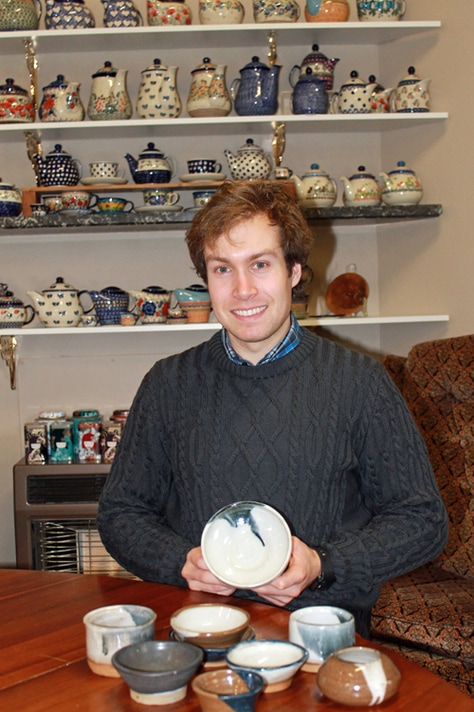 We are often asked by new customers if we make the pottery in the shop, or occasionally if we offer pottery lessons - unfortunately we aren't that talented. However, in order to further my pottery knowledge, and feed my love of all things hands-on, I have been going to weekly pottery classes at “Slow Clay” in Collingwood. These lessons have been very interesting and as well as making some of my own pots, (not yet of saleable standard of course, but I can always dream), I have learnt many things about pottery that wouldn't have even crossed my mind before. The process of course, starts with clay. That stuff in the yard that is incredibly hard to dig when you are gardening in summer, slippery as ice in the wet winter months and no good whatsoever for growing anything in. It happens though, that it is a wonderful substrate to work with. It is easily malleable; creating both regular and irregular shapes. It is recyclable; if you mess up (before firing) you can reuse it. It requires very few tools to work; just a pottery wheel and few accessories. Clean up is pretty much as easy as wiping down your bench. Initially I thought clay might be a little 'boring' to use compared to wood which has been my material of choice for hobby use. When wood turning, irregularities in a piece of timber, such as knots and figuring in the grain, can be both a nuisance and a potential focal point, often heavily influencing the final shape of a piece. I was fascinated to discover that also in pottery the actual material can play a large role in determining the final form of a piece. For example, the iconic Japanese bowl shape, with the narrow base and a wide opening, originally developed not as an aesthetic choice, but was dictated by the available clay. 'Old' clay, which we have in Australia, only shrinks around 10% between the wet, just - thrown stage, to the final fired and dry stage. 'Young' clay as found in places where there is more seismic activity, including Japan, can shrink up to 20% between the throwing and the end of the firing. This necessitated using the small foot typical of Japanese bowls as a larger foot would cause the bowl to crack upon firing. A skilled artisan, or even a talented hobbyist, will make their craft look easy. A skilled potter will transform a piece of clay into a pot in what appears to be just a movement or two. It isn't quite that simple though, and there is in fact a lot going on that an observer can’t easily see. We all know that our eyes can sometimes deceive us, and of course our smell, taste (clay doesn't taste good!) and hearing are of little use in telling you what is happening to clay that you are throwing. Pottery is a very tactile and kinaesthetic based skill, from the initial centring of the clay to the final pass over the walls of the piece to get an even thickness. I dare say even at this early stage of my pottery throwing development, I could throw a bowl (of sorts) with my eyes closed. During the first term of classes, I was of course, a raw beginner. Making something was an achievement in itself. In fact, the bowl I produced on my first attempt has made it through the rigours of trimming, applying a slip, bisque firing, glazing, a final firing and the trip home wrapped in a towel on the back of my bike. Second term, by contrast, has been a different type of challenge. I’ve upped my expectations and instead of being happy to have produced anything that is vaguely recognisable as a household vessel, I have probably recycled two thirds of the pieces that I have thrown. A few were complete failures, but most were just not quite right (or a lot not right!). The skill is not necessarily in the production of an individual piece (you can always say you intended it that way), but rather in the repetition of creating pieces that are the same (or as close to it as handmade items can be). Even though the appeal of handmade is often the fact that no two pieces are quite the same, and that there are always going to be little imperfections, to produce a set or repeat something deliberately is harder than it looks. During the lessons, Jane explained in passing that of all the household items, the hardest shape of all to perfect is the teapot. A teapot requires numerous pieces to fit together ‘just so’ and to be joined together (the body, the lid, the handle and the spout), and needs to be both light and strong. Needless to say I don’t intend to tackle a teapot until at least next term!
1 Comment
|
The Cup and MugThe adventures of a small business (more interesting than we would have ever guessed!) Archives
April 2024
Categories |